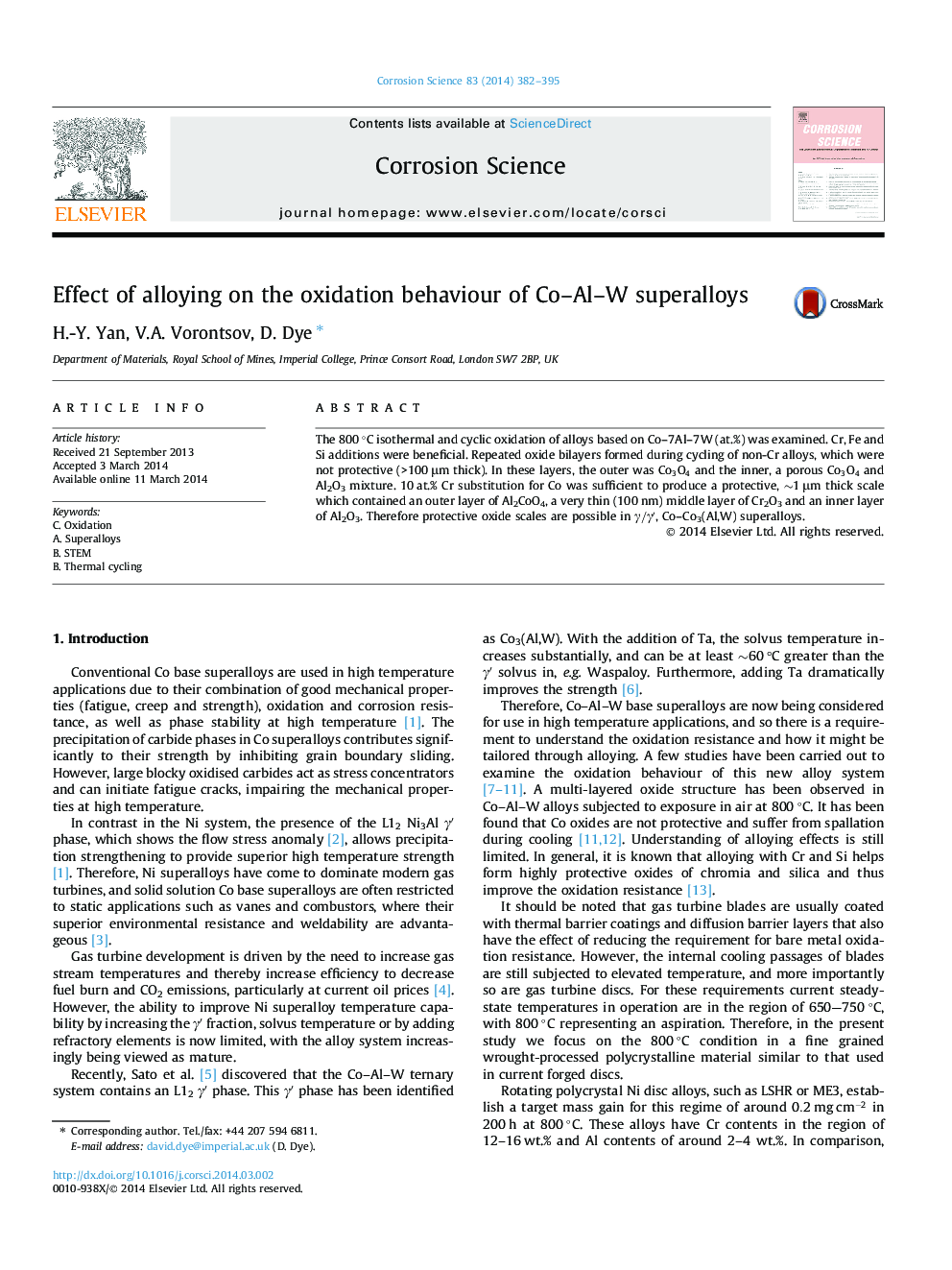| Article ID | Journal | Published Year | Pages | File Type |
|---|---|---|---|---|
| 1468907 | Corrosion Science | 2014 | 14 Pages |
•The 800°C oxidation of alloys based on Co–7Al–7W (at.%) was examined.•Cr, Fe and Si additions were beneficial.•Repeated non-protective oxide bilayers formed during cycling of alloys without Cr.•Cr modified the scale, producing a spinel overlying Cr2O3Cr2O3 and Al2O3Al2O3 layers.•Therefore protective oxide scales are possible in γγ Co/ γ′γ′Co3Co3(Al,W) superalloys.
The 800°C isothermal and cyclic oxidation of alloys based on Co–7Al–7W (at.%) was examined. Cr, Fe and Si additions were beneficial. Repeated oxide bilayers formed during cycling of non-Cr alloys, which were not protective (>100 μm thick). In these layers, the outer was Co3O4Co3O4 and the inner, a porous Co3O4Co3O4 and Al2O3 mixture. 10 at.% Cr substitution for Co was sufficient to produce a protective, ∼1 μm thick scale which contained an outer layer of Al2CoO4, a very thin (100nm) middle layer of Cr2O3 and an inner layer of Al2O3. Therefore protective oxide scales are possible in γ/γ′γ/γ′, Co–Co3(Al,W) superalloys.
